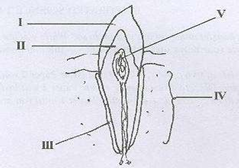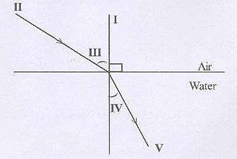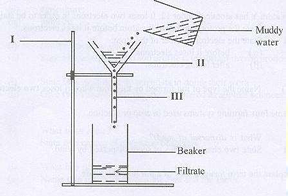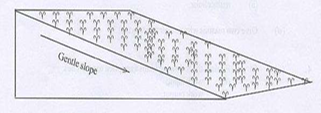ESSAY
This paper is in two parts: I and II. Answer Question 1 in part I and any other four question in part II
PART I
[40 marks]
Answer all of Question 1
-
The diagram below is an illustration of a longitudinal section of a canine tooth in humans.
Study the diagram carefully and answer the questions that follow.

Name each of the parts labelled I, II, III, and IV.
What is the function of each of the parts labelled I and III?
Which of the labelled parts could be affected by tooth decay?
State three ways by which tooth decay may be prevented.
-
The diagram below is an illustration of a scientific phenomenom which occurs in nature.
Study the diagram carefully and answer the questions that follow.

What phenomenon does the diagram illustrate?
Identify each of the parts labelled I, II, III, IV, and V.
Explain why an object at the bottom of a pond appears closer to the surface than it actually is.
-
The diagram below is an illustration of an experiment performed to separate the components of muddy water.
Study the diagram carefully and answer the questions that follow.

Name each of the parts labelled I, II, and III.
State the function of the part labelled II.
Name the substance obtained as the filtrate.
State three physical properties of the filtrate.
Name two other materials that could be used in place of the part labelled II.
-
The diagram below is an illustrates a farmland on a sloppy area.
Study the diagram carefully and answer the questions that follow.

What process is likely to occur on the farmland when it rains heavily?
State two farming practices that can also lead to the process mentioned in (i).
List four farming practices that could be used to control the process mentioned in (i).
Mention three soil resources that would be depleted from the farmland when it rains heavily.